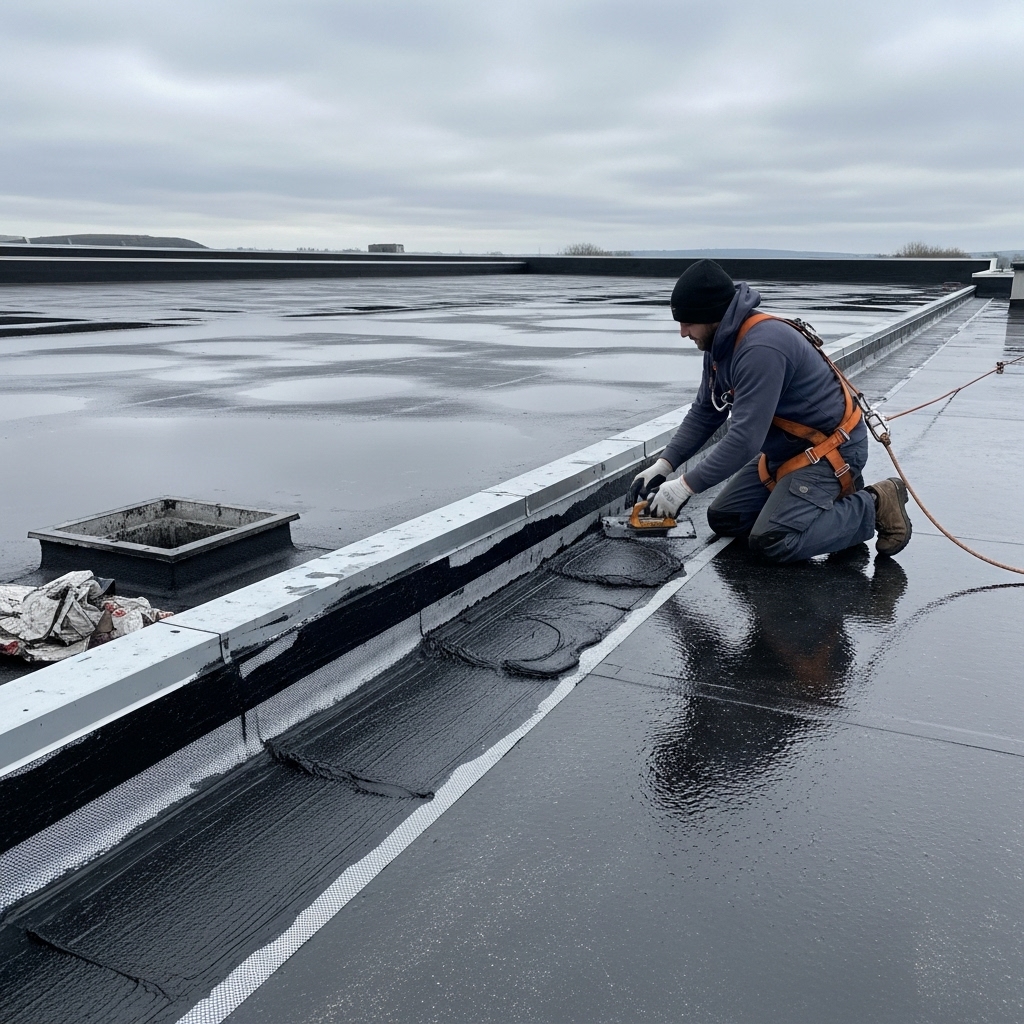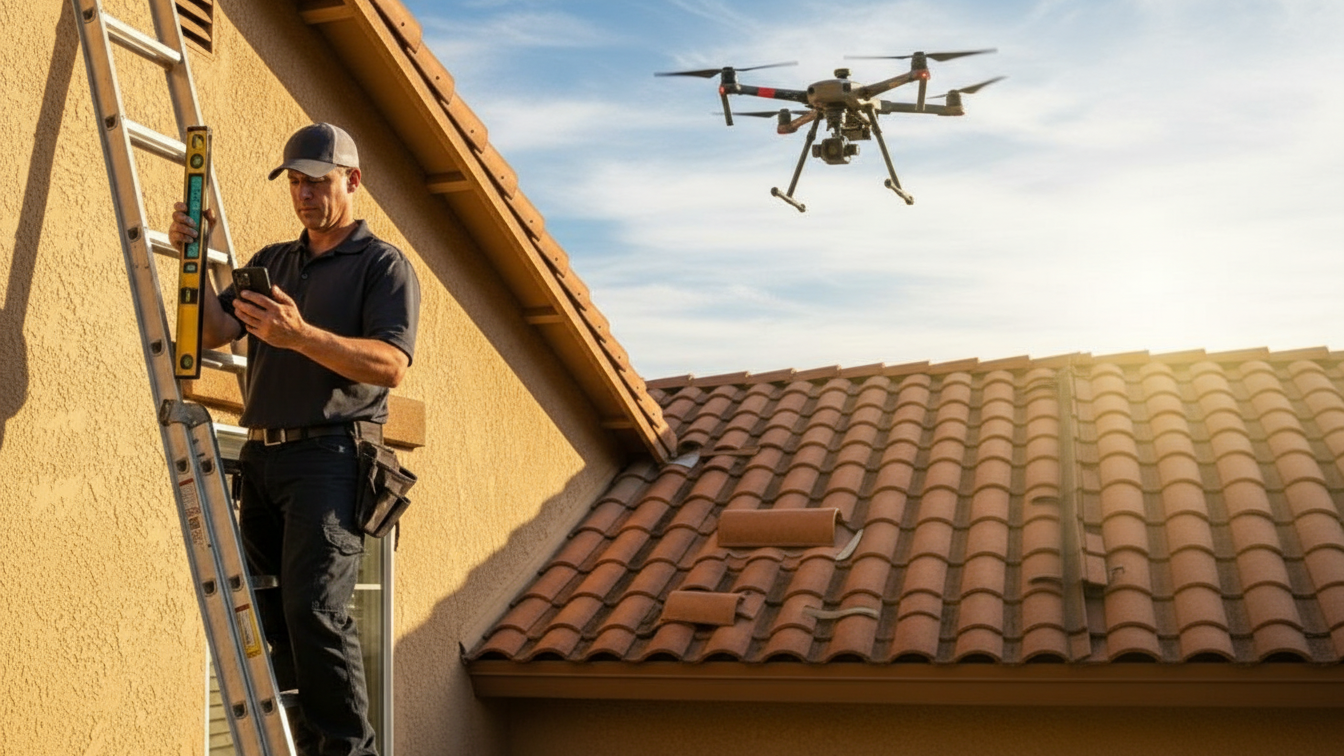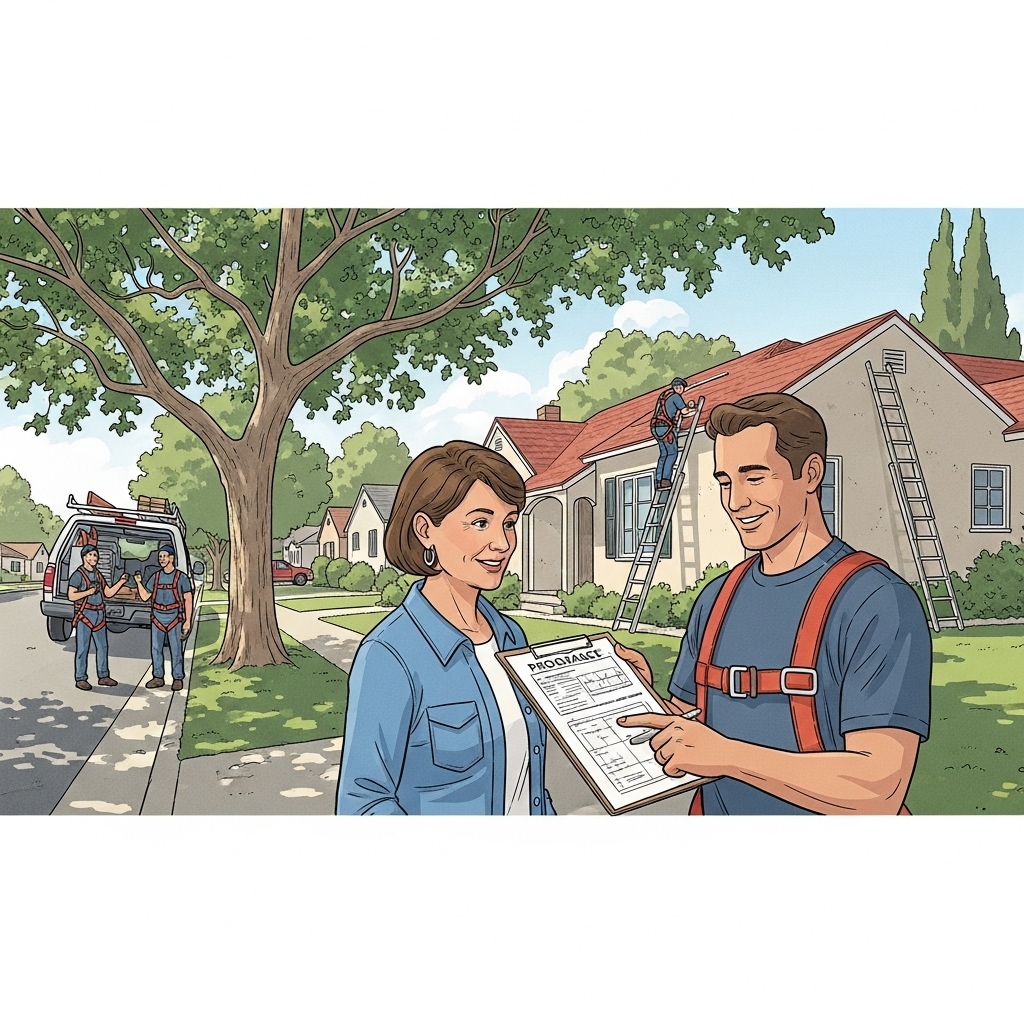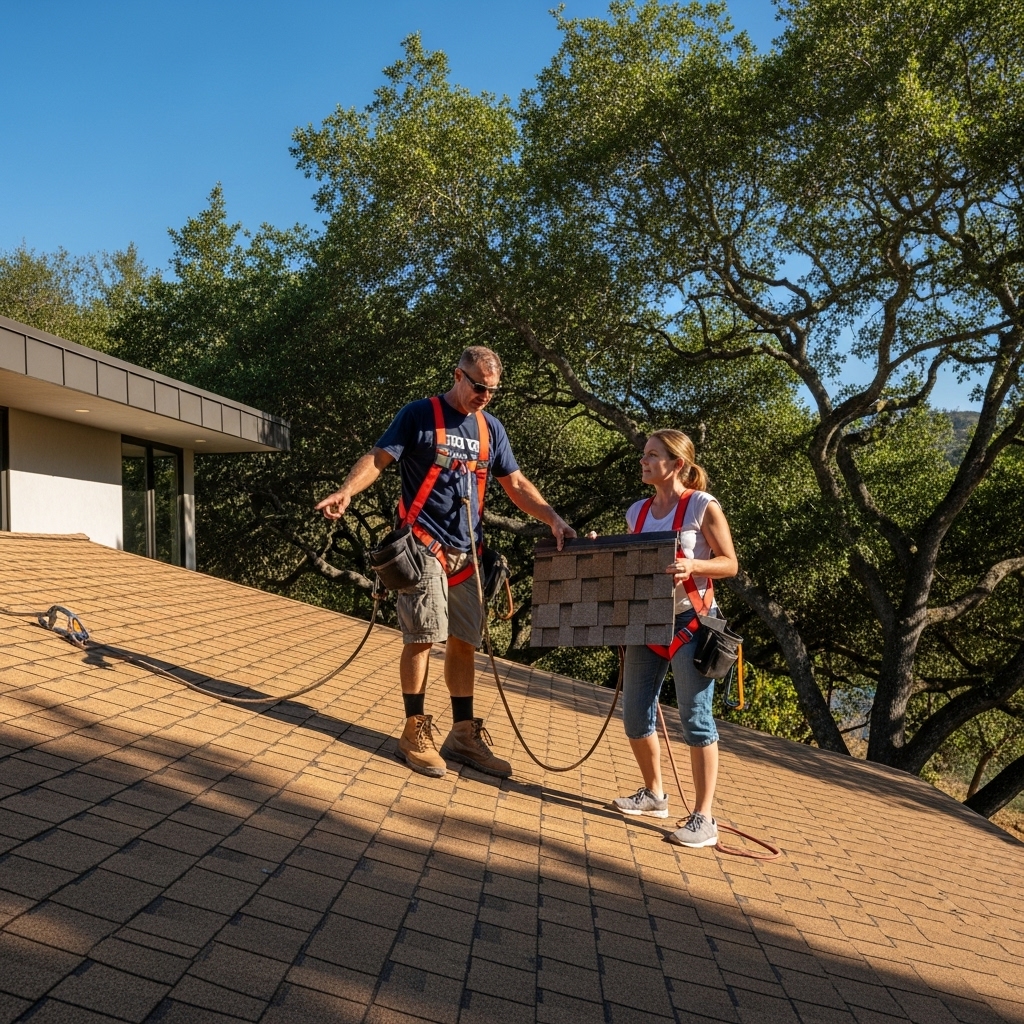When Tarzana gets one of those all-day rains, flat roofs tell their stories. Water finds the tiniest inconsistencies and turns them into damp drywall, drips around light fixtures, or a stain that wasn’t there the day before. As someone who has climbed more wet ladders than I can count after our winter storms, I’ve learned that post-rain leak repair is a blend of detective work and disciplined detailing. The rush to patch a visible hole is understandable, but most leaks start upstream—at a seam that relaxed under thermal cycling, a parapet crack that opened behind a coping joint, or a scupper that backed up when leaf debris shifted. Repairing flat roofing leaks here means following the water’s path, confirming the real entry point, and restoring the system so it’s ready for our next round of sun and surprise showers. It also means looking ahead at how to prevent a repeat with small upgrades or future enhancements to your existing flat roofing system.
Right after a storm, start inside. Where did the water appear, and under what conditions? Was wind involved? Did the leak show up immediately or after hours of steady rain? Those details guide the exterior search. On the roof, we move carefully—wet membranes can be slick—and we look for patterns: silt trails that point to ponding areas, darker patches where moisture lingered, and telltale stains around penetrations. Flat roofs in Tarzana are a mix of built-up systems, modified bitumen cap sheets, and single-ply membranes, often with coats from previous maintenance. Each has a signature failure mode when water is abundant, and recognizing those signatures speeds up the fix.
Common Post-Rain Leak Sources
Parapet junctions often lead the list. Stucco cracks just above base flashings can pull in water, especially when wind drives rain sideways. At scuppers, worn sealant or a hairline gap where metal meets membrane can create an unexpected channel. Equipment curbs take a beating too; long heat cycles expand and contract these boxes, stressing the flashing. On single-ply roofs, heat-welded seams handle a lot of movement, but if dirt and dust accumulated before a prior repair, that bond may have weakened. On built-up roofs, blisters can open under hydrostatic pressure and then settle back down, hiding the pathway until the next storm.
Tracing Leaks: From Symptom to Source
Water rarely falls straight down. It travels along the path of least resistance, riding deck irregularities and following the underside of membranes. We often begin by checking uphill from the interior symptom, testing seams with gentle pressure, and examining edges for slight lifts that capillary action can exploit. Around skylights, look for aged sealant at the curb or a flashing that has separated at a corner. At drains and scuppers, confirm that the clamp rings, strainers, and adjacent membrane are sound; a tiny gap can allow significant water entry during heavy flow.
Temporary Measures Versus Permanent Solutions
After a heavy rain, it’s reasonable to deploy a temporary dry-in to protect interiors, especially if more showers are in the forecast. Temporary patches use compatible materials to stop the immediate leak without overcommitting to a detail that may need rework. Once the weather clears, we return for a permanent fix: cleaning the area thoroughly, reinforcing with fabric and mastic on asphaltic systems or installing heat-welded patches on single-plies, and addressing any upstream contributors like clogged scuppers or misdirected condensate lines.
Drainage Matters Most After Storms
Even roofs with good slope can pond when debris shifts. In Tarzana, wind can push leaves and seed pods toward low points, where they clog grates quickly. During the repair, we clear and test drains and scuppers under controlled flow. Restoring drainage can turn a chronic leak into a solved problem. On some roofs, small tapered adjustments or re-sealing of metal transitions around scuppers reduces turbulence and opportunistic water entry.
Material-Specific Repair Notes
On modified bitumen, successful repairs rely on clean, dry surfaces and well-embedded reinforcement. We feather the edges of mastics to reduce stress risers and extend coverage into adjacent stable areas. On TPO and PVC, solvent cleaning and precise heat welding are essential; an improperly cleaned surface is a common root cause for failed prior patches. On previously coated roofs, we evaluate adhesion. If the old coat is peeling near the leak, we stabilize or remove weak sections before installing a repair that integrates with the remaining field.
Why Heat History Matters
Tarzana’s sun creates notable movement in flat roof assemblies. Over time, daily expansion and contraction can slowly loosen terminations and flashings. After a storm, we examine not only the point of entry but the movement history around it. A cracked mastic line or a slightly lifted seam near a metal edge may have been reliable for years before finally yielding under a day of sustained rain. Repairing the leak means restoring elasticity and, where needed, upgrading the nearby detail to better tolerate future cycles.
Mid-Repair Decisions That Pay Off
Halfway through a repair, we revisit earlier assumptions. Did we find moisture in the substrate that calls for a small cut-out and replacement? Can we redirect a condensate line that dumps onto a vulnerable seam? Should we reinforce a broader area to tame movement? These are the choices that turn a patch into a solution. It’s also the moment to discuss longer-term options—like adding a reflective topcoat later—to complement your flat roofing and help prevent heat-induced aging that can lead to future leaks.
Post-Repair Testing and Documentation
We like to validate repairs with realistic water tests once materials have set. A steady flow near the repaired area confirms how water behaves when drains are engaged. Documentation matters too; detailed photos and notes make future maintenance more effective and help you track the history of your roof’s performance through different seasons.
Safety and Access During Wet Conditions
Wet roofs can be slick, and some surfaces remain slippery even after the sun returns. We use safety lines and take measured steps to avoid damaging softened surfaces. On commercial buildings, coordinating with tenants ensures that ladders, cones, and work zones stay clear of doorways and customer paths. Safety-conscious work protects people and preserves the roof during a vulnerable moment.
Preventive Steps Before the Next Storm
Simple habits make a big difference: clear drains ahead of the rainy season, check parapet caps for loosened joints, and make sure rooftop equipment is supported correctly so vibration doesn’t abrade the membrane. After a summer heat wave, walk the roof to spot small lifts or dried sealant that will struggle during winter rains. Preventive care transforms how your roof handles the next downpour.
Frequently Asked Questions
Why did my roof leak after years without problems?
Thermal cycling and UV exposure gradually weaken details like seams and mastics. A heavy rain reveals the first significant gap. Addressing both the leak and surrounding stress points restores reliability.
Is the leak directly above the interior stain?
Not always. Water follows pathways and can travel before showing inside. Tracing from the interior symptom to upstream entry points is part of a thorough repair.
Can I patch a wet roof immediately?
Temporary dry-ins can help during active weather, but permanent repairs require dry, clean surfaces for proper adhesion. Coordinating a return visit under better conditions ensures longevity.
What if water is trapped under the membrane?
Trapped moisture compromises repairs. We may open a small section to dry or replace wet materials before resealing. This step prevents recurring issues.
How can I prevent debris from clogging drains?
Regular checks before and after windy periods, secure strainers, and keeping nearby trees trimmed reduce debris loads. Simple maintenance dramatically improves storm performance.
Will coatings stop leaks permanently?
Coatings protect and extend life but rely on sound flashings and a stable surface. We repair and reinforce critical details first, then consider a coating as a protective layer, not a substitute for flashing work.
How soon can you test a repair after application?
Testing depends on material cure times and weather. Once set, controlled water flow validates the repair without risking adhesion. We plan tests to match the product used and current conditions.
Talk With a Local Leak Repair Specialist
If your Tarzana home or shop just weathered a storm and evidence of a leak has you concerned, let’s find the source and fix it right. We will trace the water path, stabilize the area, and rebuild details to handle our sun and sudden showers. Reach out today to schedule an inspection and a clear plan forward. For responsive service and solutions that respect your building’s needs and season-to-season realities, connect with our team and explore reliable options for your flat roofing.






